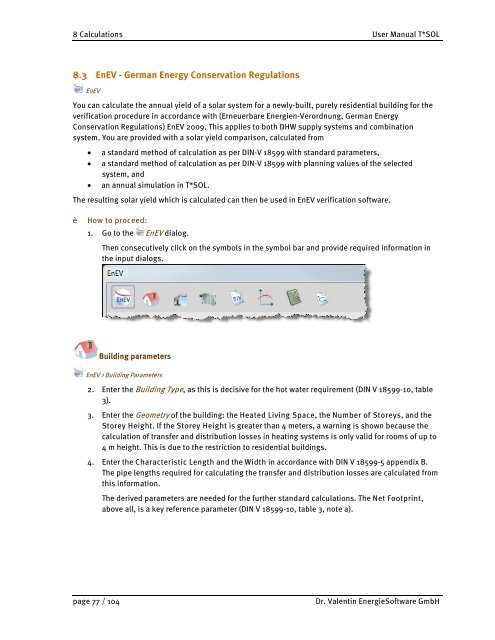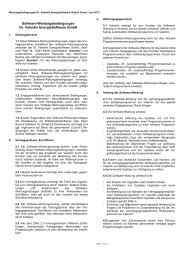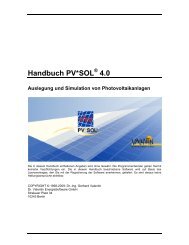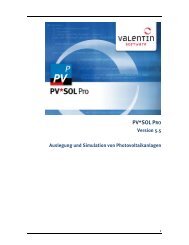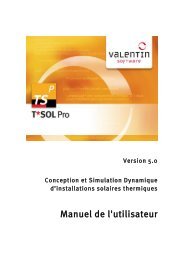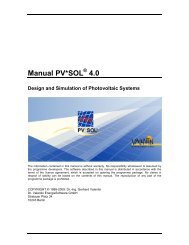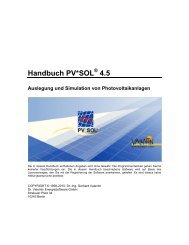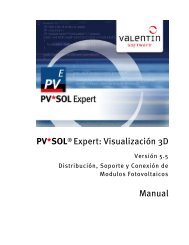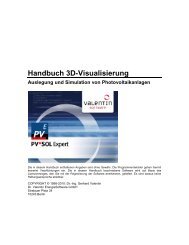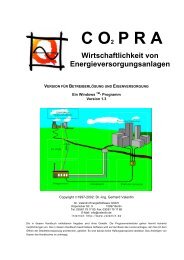Manual T*SOL basic 5.0 - Valentin Software
Manual T*SOL basic 5.0 - Valentin Software
Manual T*SOL basic 5.0 - Valentin Software
Create successful ePaper yourself
Turn your PDF publications into a flip-book with our unique Google optimized e-Paper software.
8 Calculations User <strong>Manual</strong> <strong>T*SOL</strong><br />
8.3 EnEV - German Energy Conservation Regulations<br />
EnEV<br />
You can calculate the annual yield of a solar system for a newly-built, purely residential building for the<br />
verification procedure in accordance with (Erneuerbare Energien-Verordnung, German Energy<br />
Conservation Regulations) EnEV 2009. This applies to both DHW supply systems and combination<br />
system. You are provided with a solar yield comparison, calculated from<br />
• a standard method of calculation as per DIN-V 18599 with standard parameters,<br />
• a standard method of calculation as per DIN-V 18599 with planning values of the selected<br />
system, and<br />
• an annual simulation in <strong>T*SOL</strong>.<br />
The resulting solar yield which is calculated can then be used in EnEV verification software.<br />
Ł How to proceed:<br />
1. Go to the EnEV dialog.<br />
Then consecutively click on the symbols in the symbol bar and provide required information in<br />
the input dialogs.<br />
Building parameters<br />
EnEV > Building Parameters<br />
2. Enter the Building Type, as this is decisive for the hot water requirement (DIN V 18599-10, table<br />
3).<br />
3. Enter the Geometry of the building: the Heated Living Space, the Number of Storeys, and the<br />
Storey Height. If the Storey Height is greater than 4 meters, a warning is shown because the<br />
calculation of transfer and distribution losses in heating systems is only valid for rooms of up to<br />
4 m height. This is due to the restriction to residential buildings.<br />
4. Enter the Characteristic Length and the Width in accordance with DIN V 18599-5 appendix B.<br />
The pipe lengths required for calculating the transfer and distribution losses are calculated from<br />
this information.<br />
The derived parameters are needed for the further standard calculations. The Net Footprint,<br />
above all, is a key reference parameter (DIN V 18599-10, table 3, note a).<br />
page 77 / 104 Dr. <strong>Valentin</strong> Energie<strong>Software</strong> GmbH


